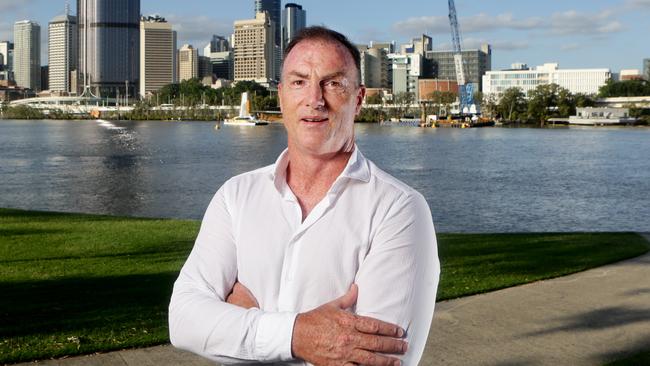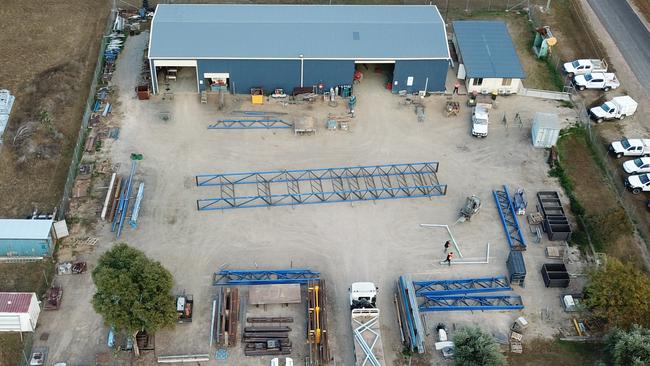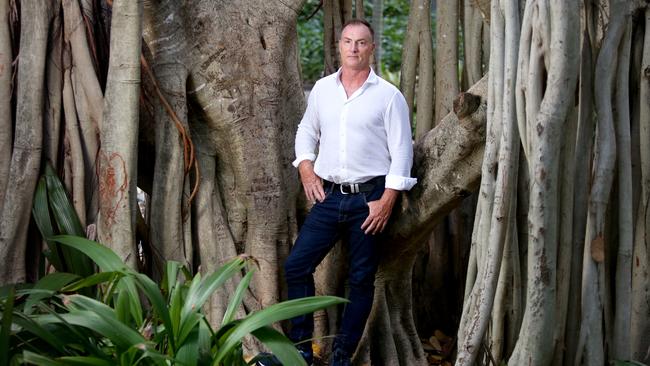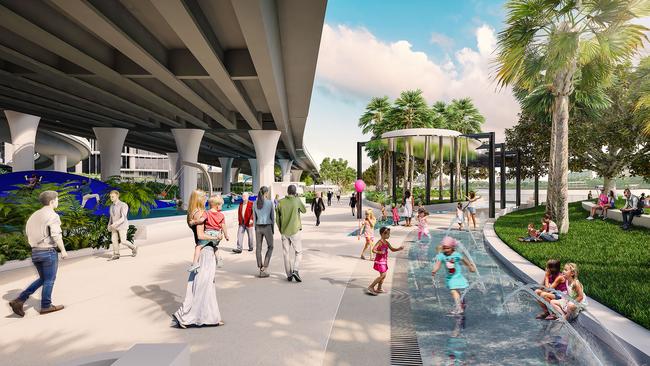Mega projects are transforming small Queensland companies
Small local businesses are among the big winners as Brisbane’s $26.5 billion infrastructure, lifestyle, tourism and entertainment construction boom grows apace. SEE THE LIST OF MAJOR PROJECTS IN THE PIPELINE

QLD Business
Don't miss out on the headlines from QLD Business. Followed categories will be added to My News.
Blask Engineering may be a small metal workshop more than 200km west of Brisbane but it’s eyeing the construction boom in the big smoke.
Founder Brad Johnson, who started Blask in the town of Inglewood 25 years ago, recently completed a $1.5 million jet blast shield for Brisbane Airport’s second runway project.
“It was our single biggest contract and we are looking
for more work in Brisbane on projects like the Cross River Rail,” says Johnson, who employs 10 people in the town of 900.
How the new $1.3b Brisbane Airport runway will change the city
Johnson not only welcomes the cash flow from the new runway but the opportunity to take part in a landmark project. Using 140 tonnes of steel and taking six months to complete, the shield is designed to ensure jet blasts are deflected away from vehicles travelling in an underpass below a new taxiway.
“It helped lift our quality control processes,” says Johnson, who adds it can be difficult for regional firms to win projects in Brisbane.

With $26.5 billion worth of infrastructure, lifestyle, tourism and entertainment projects scheduled to be completed over the next decade in Brisbane, small firms such as Blask hope they get more of the money being splashed around. Brisbane Airport Corporation says 90 per cent of construction equipment for the new runway is sourced from southeast Queensland.
Queensland Economic Advocacy Solutions director Nick Behrens says Blask is a good example of a regional business taking advantage of the “cascading effect” of major projects. “The company’s employees will now spend that money in the community,” Behrens says.
“Each of these products represents enormous opportunity to their respective supply chain.”
He names more than a dozen projects under way that combined represent four years worth of Queensland’s total building construction activity – Brisbane Live, Brisbane Metro, Brisbane Showgrounds redevelopment, Cross River Rail, Queen’s Wharf, Brisbane Quarter, South Bank Southpoint, Howard Smith Wharves, Waterfront Precinct, Brisbane Airport second runway, Northshore Hamilton, International Cruise Ship Terminal, Gabba Precinct and Herston Quarter.
“Individually each of the projects is impressive but collectively they represent a once-in-a-generation level of investment coming on line within a narrow window of our city’s history,” Behrens says.

“Over the next five years, Brisbane will experience investment in new major projects on a scale not seen even during Expo 88.”
Expo 88 was largely credited with dragging Brisbane from country-town status into the big league among Australian cities. “At no time in the state’s history have such significant projects been undertaken at a similar time,” Behrens adds.
He says the projects will have the beneficial effect of diversifying the Queensland economy, making it more resilient to downturns. “Arguably, Brisbane’s current economic profile relies heavily on locally generated revenues,” he says.
“But these projects will regear the city for the global marketplace, offering a buffer or hedging opportunity to commodity prices and global demand for our resources.”
As a young urban design student at the Queensland University of Technology in the late 1980s, Stephen Pate used to park his motorbike under the expressway in the Brisbane CBD.
“It used to be this deserted patch of dirt along the river with not even somewhere to sit,” Pate recalls. “Not a penny had been spent on it.”
Fast forward 30 years and the barren patch of land is the epicentre of the multibillion-dollar Queen’s Wharf project and Pate’s landscape architecture firm CUSP is in charge of transforming it into a series of walkways, parks and other public spaces to complement the hotels, shops and casinos.
“The whole idea is to try and improve access to the river,” Pate says. “Broadly, we want to connect the river to the city and visa versa.”
Because the freeway cuts off large swathes of the city from the river, much of the public space is by necessity located under the freeway itself. That’s been a tricky brief that has involved fitting pathways and greenery under and around big concrete columns.
Formed in 2013 with partner Dan Wright, CUSP has worked on commercial and residential projects across Australia and in Fiji. The Queen’s Wharf project makes up about two-fifths of its workload and has necessitated lifting staff numbers to about 20.
Pate says the project has helped lift the professionalism of the firm, particularly in the area of technology. As part of tendering for the project, CUSP was required to install Building Information Modelling (BIM) software and hardware, allowing it to design outdoor spaces in 3D.

“We still believe in the pen but BIM allows you to design in a virtual environment, which is good from a collaborative point of view,” Pate says.
“It also reduces mistakes in the design process and will pick up whether a footing will go through a retaining wall. It also will tell you how many pavers you will need for a walkway down to the square metre and how many walls need to be painted.”
Pate says the company would not have installed the
BIM technology if it had not decided to tender for
Queen’s Wharf. It was now winning more work as a result of having BIM.
“When we started CUSP we did not know where we were going to end up but then a project like Queen’s Wharf comes along and it makes an enormous difference,” he says.
He says people’s expectations about public space and amenity are changing in Brisbane despite rising density in the inner city: “Brisbane only has 25 per cent of the open space of other Australian cities within 5km of the CBD.”
Griffith University urban planner Dr Tony Matthews says Brisbane is becoming an internationally significant city, helped by what he calls “mega projects” such as Queen’s Wharf and Brisbane Live.

“The fact that these projects are largely being funded by the private sector shows that there is confidence that the loans used to build them can be repaid and the projects are needed,” Matthews says.
He says delays and cost overruns can always emerge as issues for mega projects but he did not see that occurring on projects in Brisbane at the moment.
Matthews says Brisbane is following the development path of other cities in that it recently experienced a building boom in inner-city residential housing. About 37 per cent of all dwellings within 2km of the city were now multi-storey apartments and there was now the population density to support mega projects.
“Sydney and Melbourne have developed to such an extent that it is natural that the attention now turns to Brisbane,” he says.
Behrens says there is a symbiotic relationship between some of the infrastructure projects, including the new runway and entertainment venues such as Queen’s Wharf. “These projects will mutually benefit each other,” he says.


